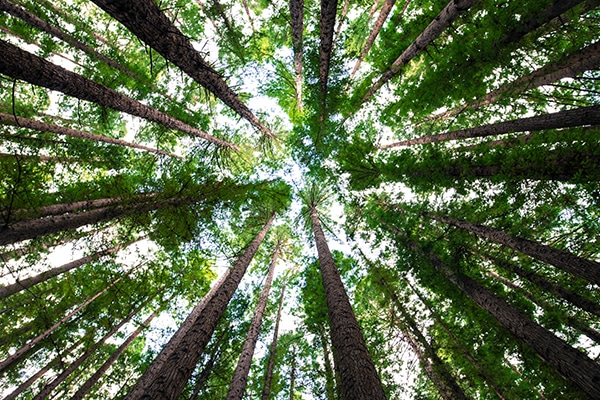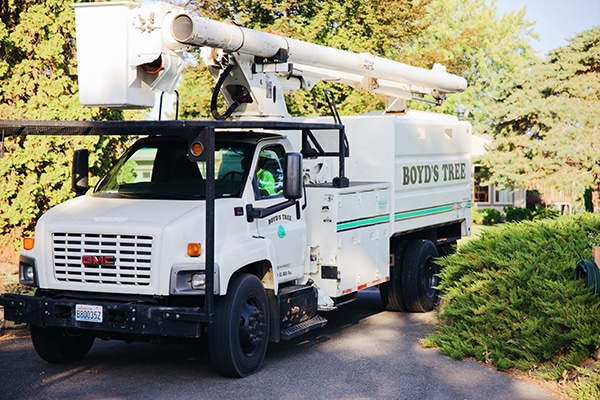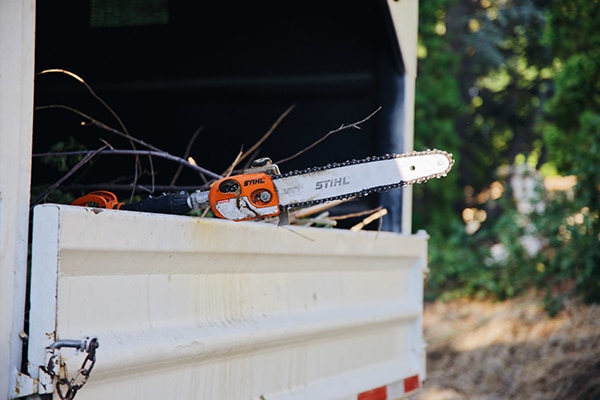Trees are a beautiful part of our world. They are not only gorgeous and calming to look at, they also provide us with oxygen and shade, a shelter for animals, and they are vital to sustaining our ecosystem.
What many of us don’t know about trees is how they grow.
Trees have six organs: leaves, stems, and roots – or vegetative structures – and flowers, fruits and seeds, or reproductive structures. Tree growth involves the vegetative structures increasing in size and numbers. Trees then use the sun, carbon dioxide, water, and minerals to produce sugars. Sugars are the building blocks of tree growth.
Roots – the Source of Tree Growth
An important biologic functionary of the tree root system is the small, almost invisible root “hair.” Root hairs are located behind the hard, earth –probing root tips that burrow, extend and expand in search of moisture while at the same time building a tree’s ground support. Millions of these fragile, microscopic root hairs wrap themselves around individual grains of soil and soak up moisture and dissolved minerals.
A primary soil benefit takes place when the root hairs latch onto soil particles. Eventually, tiny roots extend to so many particles of earth that the soil becomes solidified into place. Consequently, the soil is capable of resisting the erosion of wind and rain and becomes a solid foundation for the tree itself.
Root hairs are always expanding, as they grow to provide sustained maximum root hair production. What’s more, most roots are located in the top 18 inches of soil and more than half are in the top six inches of soil.
Tree Trunks – Supporting Tree Growth
A tree’s trunk is vital for limb support and root-to-leaf nutrient and moisture transport. The tree trunk constantly lengthens and expands as it grows while seeking moisture and sunlight. Cell divisions in the cambium layer of the bark are responsible for a tree’s diameter growth. The cambium is made up of growth tissue cells and is located under the bark.
The annual rings that you see on a tree are the new layers created by the xylem cells and phloem cells. These cells are formed on both sides of the cambium. Xylem cells conduct water and nutrients. Fibers in the xylem cells provide strength in the form of wood. Meanwhile, the vessels funnel water and nutrients to the leaves. Phloem cells transport sugars, amino acids, vitamins, hormones, and stored food.
Leafy Crown – Bud Formation
The tree’s crown is where the predominant amount of bud formation takes place. The tree bud is a small bundle of growing tissue that develops into embryonic leaves, flowers, and shoots. It is important for primary tree crown and canopy growth.
Along with branch growth, buds are what cause flower formation and leaf production. A tree’s small budding formation is covered in a protecting leaf known as the cataphylls. The protected buds enable plants to keep growing and produce small new leaves and flowers despite any adverse environmental conditions that may exist.
A tree’s “crown” is a grand network of leaves and branches formed by growing buds. Similar to roots and trunks, branches grow in length from growth cells that make up the meristematic tissues, which are contained in growing buds. A tree’s crown shape, size and height are established by limb and branch bud growth. The tree’s main and terminal leader grows from a bud cell – the apical meristem – which controls tree height.
Reaching New Milestones
Trees are considered seedlings at the beginning of the growing process until the tree is about 3 feet high, though this varies among different tree species. Then it becomes a sampling. The tree continues as a sampling until its trunk extends 2 ¾ inches in diameter. Then the tree is re-categorized as a young tree. The tree is classified as mature when it has reached about
12 inches in diameter.

Let Boyd’s Tree Service Help Keep Your Trees Healthy and Thriving
At Boyd’s Tree Service, we are a full-service tree and stump removal business that serves the Tri-Cities and surrounding areas. We pride ourselves on always making sure the trees in our communities are healthy and beautiful.
You’ll find that Boyd’s Tree Service – comprised of fourth-generation tree men – provides the most comprehensive tree care. We take pride in enhancing the well-being, beauty and aesthetics of your trees.
If you live in the Tri-Cities and surrounding areas and you would like more information about our tree services or to schedule an appointment, we invite you to call Boyd’s Tree Service at (509) 585-4194.







